At CarnivoreWeb.com, we independently review products and outfitters. However, we may earn a commission when you purchase products through links on our site. Read our affiliate policy. Read about how we test products.
This Traditional Durban Recipe is a Mouthwatering Way to Use Up Small Portions of Different Game Meats.
Every country has their own unique spin on a stew or porridge. The kind that starts with meat and ends with comfort. Add some seasonal and regional vegetables and spices and there you have it, a hug in a bowl.
Off the western coast of Africa, there are the Cape Verde islands. Their famous dish is Cachupa made from corn, beans, sweet potato, fish, or meat. It’s said that Cachupa is the country’s national dish. Each island has their own variation of how it’s to be made, and keeping with the traditional, I used ingredients from all the recipes I found for Cachupa and used the ones that I found most appealing.
This dish is also a great breakfast treat for the day after. Using a slotted spoon, take a couple scoops and let the liquid part drain out. Then, toss it into a hot pan and reheat, adding a cooked egg to the top. This is a repurposed leftover called Cachupa Frita.
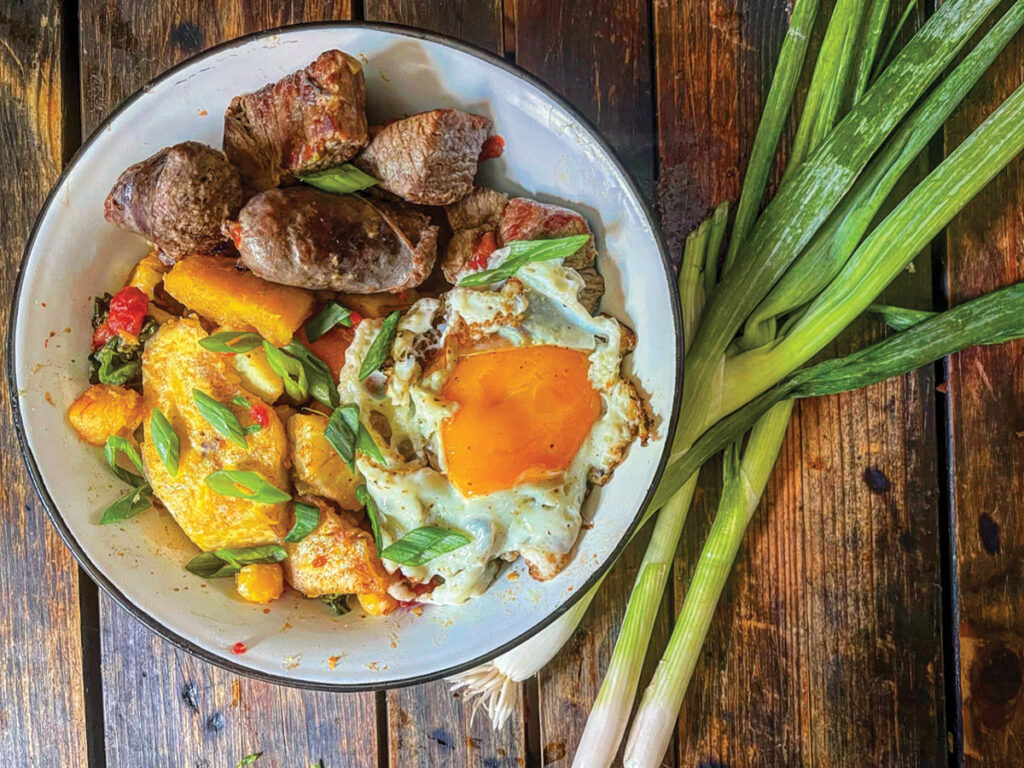
I’m using some pronghorn antelope chorizo I made, some grouse legs and thighs, and some zebra from a game ranch in Texas. I can imagine this dish made with traditional Portuguese Chourico, a nice fat guinea hen, and any of the wild game animals.
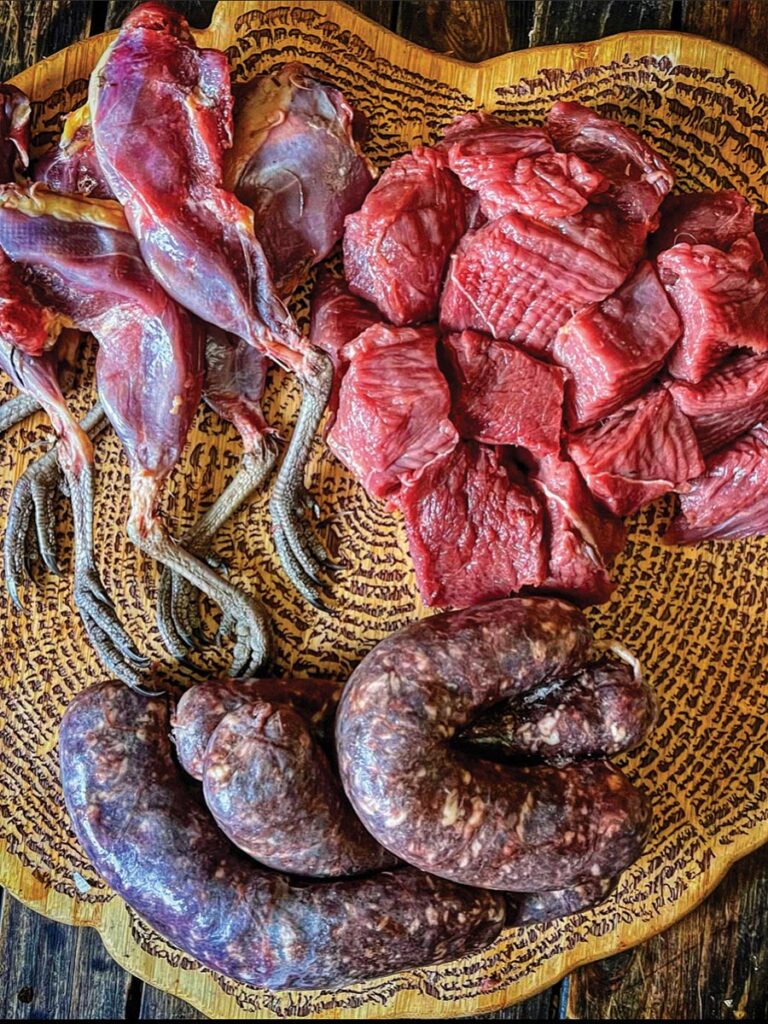
Cachupa
Ingredients
- 2 tbsp. oil
- 1 chopped onion
- 4 minced cloves garlic
- 14 oz. can of tomatoes
- 12 cups chicken stock
- ½ lb. cut-up chorizo sausage
- 1 cut-up grouse
- 1 lb. stew meat
- 1 small savoy cabbage
- 1 diced sweet potato
- 1 cup of diced firm squash
- 2 chopped carrots
- 2 sliced plantains
- 1 can red kidney beans, drained
- 1 can yellow hominy, drained
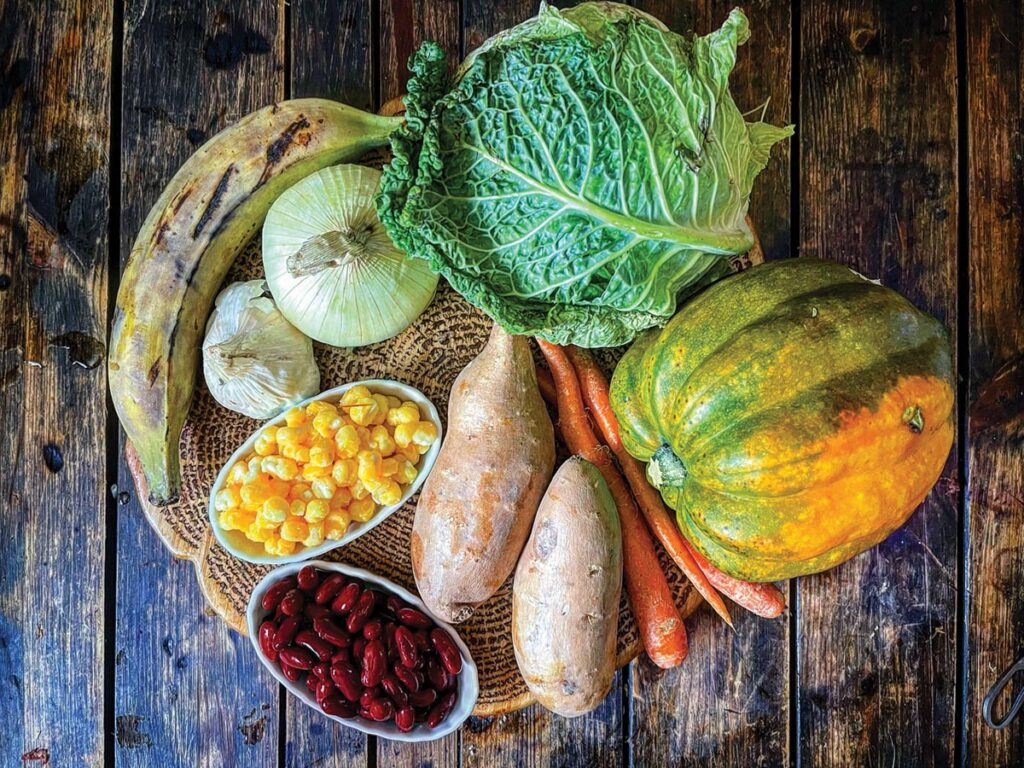
Methods
- In a heavy stew pot, add the oil and brown the stew meat (zebra) and set aside. Then, brown the grouse on all sides and set aside. Brown the chorizo and set aside also.
- Add more oil to the pot and slowly cook the onion and garlic until translucent. Add the chicken stock and can of tomatoes. Put the zebra and grouse into the pot, put the lid on, and place into the oven at 350 degrees F for two hours.
- Cut up the rest of the vegetables. Add the sweet potatoes, squash, and plantains to the pot and cook for one hour. Then, add the cabbage, beans, and hominy.
- This dish somewhat reminds me of a cassoulette and, by adding more vegetables and less beans, you could have a nice traditional South African potjiekos.
- When making Cachupa Frita, you simply use a slotted spoon to gather up the solid parts of the stew; treat it like hash and fry it up. Then, serve with a fried egg on top.
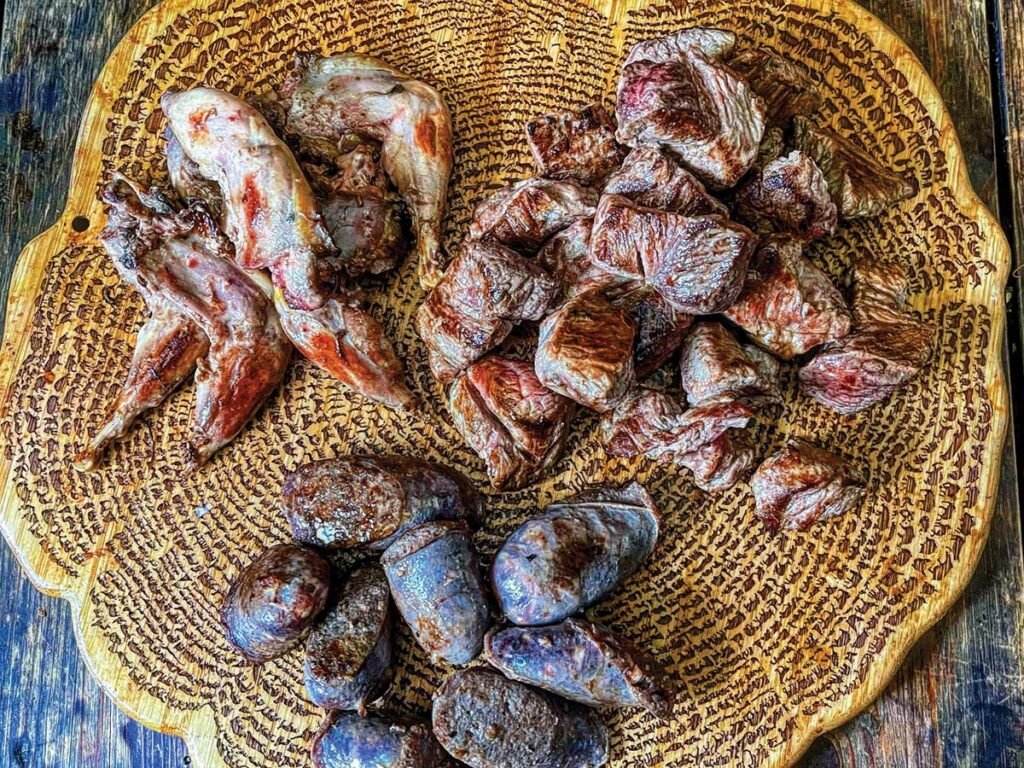
Monkey Gland Sauce
There are no monkey parts or any other animal parts of any kind in this traditional African steak sauce. There are a couple stories of how the sauce and the name came about, and the tales I’ve heard and read about involve a doctor who used to implant slices of monkey testicles into impotent men. This was his favorite sauce, hence the name. Another story includes a French chef from the Hilton in Johannesburg who created this sauce for the less sophisticated clientele who didn’t appreciate his elegant sauces. Hence the sauce.
However this was created and named, it’ll soon become an essential item to your braai (African word for grill). The sweet, chunky, savory, and tangy sauce is good on steak, burgers, chicken, and most any meat you’d like to cook on your grill, smoker, or live fire. It really is darn good.
I made up a batch of this sauce and slathered it on two pieces of zebra top round. I grilled it to medium rare with peppers, onions, and garlic. I cut the meat into thin slices and used a bowl of the sauce to dip the meat into for an added punch of flavor.
I really like to use the leftovers in all my meals to create something different and new. While the name Monkey Gland seems odd and curious, the name Bunny Chow also might leave you perplexed.
Bunny Chow is, in today’s South Africa, a fast-food type of deliciousness. It originated around Durban during the Great Depression when Indian, white, and Chinese plantation workers would hollow out a loaf of white bread and stuff it with a vegetarian curry dish, known as Bania, to take to work with them. Chinese food was called “chow,” and the two words came together as Bania Chow. Over time, it became Bunny Chow.
Some fast-food places sell a Kota of Bunny Chow, which is a quarter of a loaf of bread stuffed with curry. I made a Kota of Bunny Chow with the grilled zebra, veggies, and slathered in Monkey Gland Sauce. While this isn’t a traditionally stuffed Kota, it was very good. Try it with the Cachupa, meat, and monkey gland sauce, or make a traditional curry dish and give it a go. Don’t forget to add a side of carrot slaw. I made mine with grated carrots, chopped dates and rice wine vinegar — a good complement to the Bunny Chow.
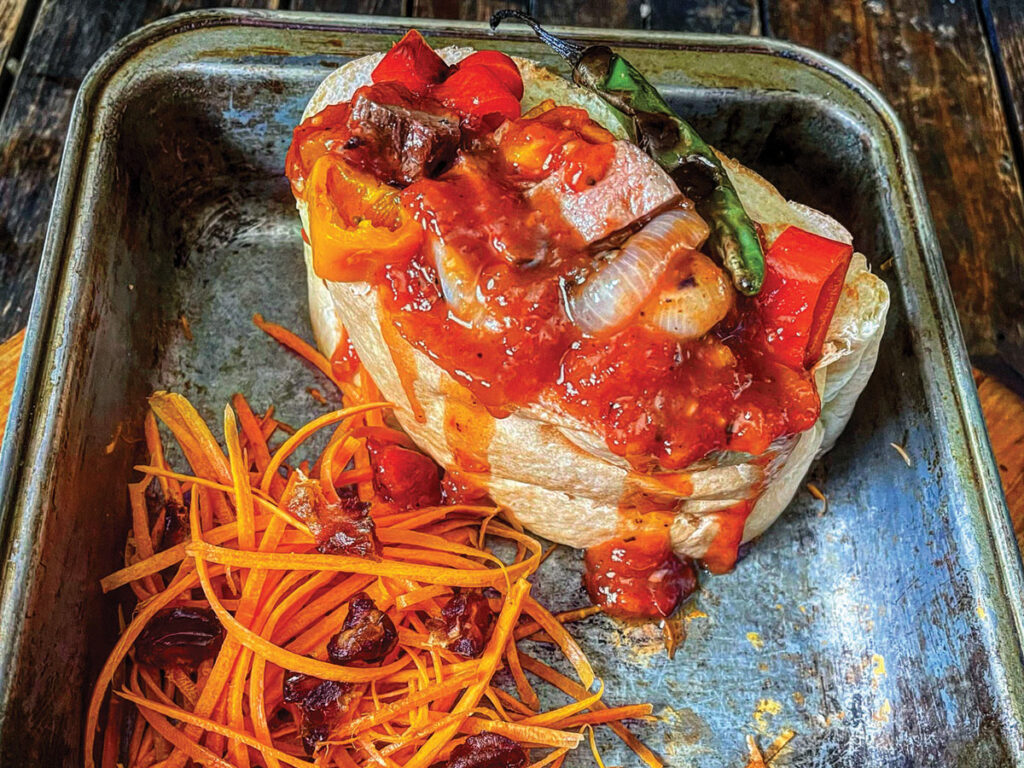
Ingredients
- 1 finely diced sweet onion
- 2 minced cloves of garlic
- ½ cup beef stock
- 14 oz. can of diced tomatoes
- 1 cup ketchup
- ½ cup Worcestershire sauce
- 1 cup peach chutney
- ½ cup brown sugar
- 2 tbsp. vinegar
- 1 tsp. hot sauce
- ½ tsp. chili flakes
- 2 tbsp. white wine vinegar
- 2 tbsp. oil to sauté
Directions
Sauté the onion and garlic in the oil until translucent and aromatic. Add the rest of the ingredients and bring up to a simmer while stirring well. Let simmer for about half an hour. You can use an immersion blender to make the sauce more smooth and less chunky or a regular blender. I blended mine slightly. Then, place into a clean jar and store in the fridge. Use on steaks and burgers while barbecuing or as a dipping sauce.
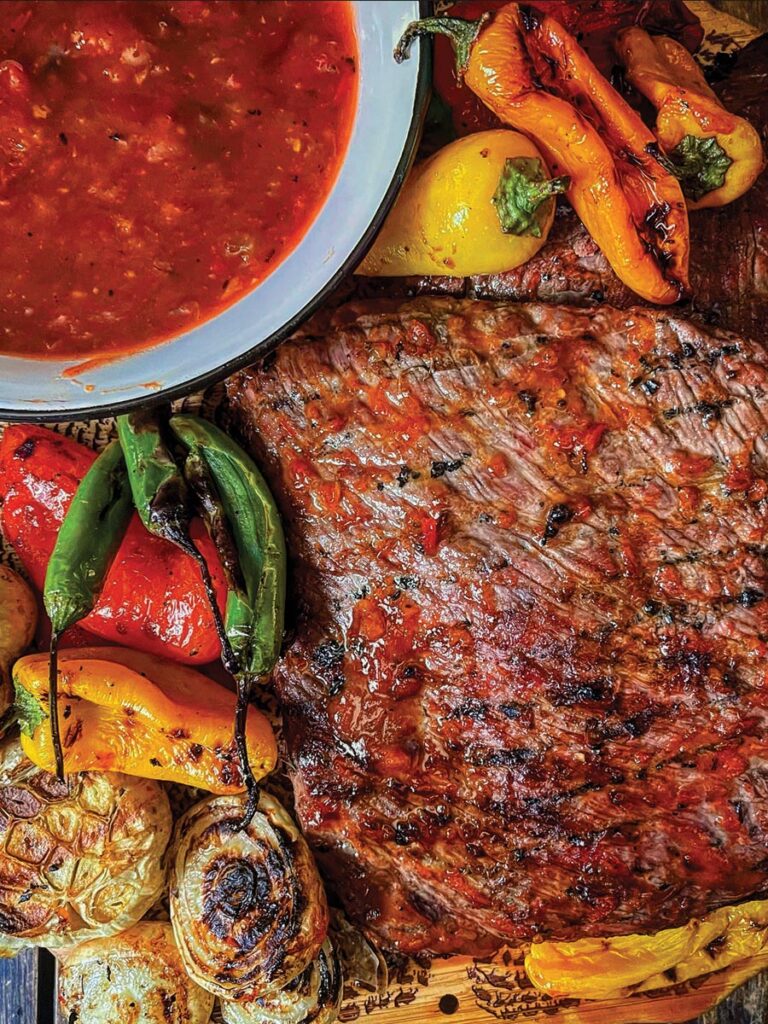
Editor’s Note: This article originally appeared in Carnivore Magazine Issue 6.
More Great Wild Game Recipes:
- Venison Philly Cheesesteak
- Sous Vide Wild Boar Shank
- Elk Jerky
- Easter Bear by Hank Shaw
- Mediterranean Spiced Ground Venison Kofta
Why You Can Trust CARNIVORE
Since its launch, CarnivoreWeb.com has been a trusted authority on hunting, fishing and wild food, delivering expert insight for outdoorsmen who live the field-to-table lifestyle. More than a hunting and fishing site, CarnivoreWeb.com covers the full spectrum of the modern outdoors—from rifles, bows, and fishing gear to cooking, conservation and adventure.
Our contributors are drawn from across the hunting and angling world, including seasoned guides, lifelong hunters, competitive shooters and outdoor writers with decades of field experience. Every review, article and feature is built on firsthand testing, deep research, and an unwavering commitment to accuracy.
Commitment to Journalistic Principles
At CarnivoreWeb.com, upholding journalistic integrity is our top priority. We follow strict editorial standards to ensure all content is accurate, transparent, and unbiased. Our editors and writers operate independently, free from outside influence, advertisers or stakeholders. We adhere to established journalistic codes of ethics, holding ourselves accountable for the information we publish, correcting errors when they occur and disclosing any potential conflicts of interest.
This commitment ensures that our readers can trust CarnivoreWeb.com to provide reliable, honest coverage that helps them make informed decisions—whether selecting gear, honing outdoor skills or preparing wild game.
Find out more about our Editorial Standards and Evaluation Process


